scottish
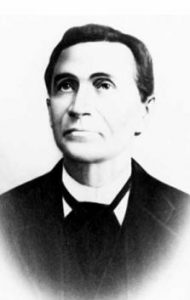 The other day, while reading an article about notable Native Americans, I came across a name that was familiar to me, but really didn’t seem like a Native American name. The name was Renville, the same name as my grand-nephew, James Renville. Immediately, I wondered if there might be a connection between Chief Gabriel Renville and my grand-nephew. The search didn’t take very long, before I had my answer. Gabriel Renville is my grand-nephew, James’ 1st cousin 7 times removed. I find that to be extremely amazing to think that James is related to an Indian chief. With that information, I wanted to fine out more abut this man.
The other day, while reading an article about notable Native Americans, I came across a name that was familiar to me, but really didn’t seem like a Native American name. The name was Renville, the same name as my grand-nephew, James Renville. Immediately, I wondered if there might be a connection between Chief Gabriel Renville and my grand-nephew. The search didn’t take very long, before I had my answer. Gabriel Renville is my grand-nephew, James’ 1st cousin 7 times removed. I find that to be extremely amazing to think that James is related to an Indian chief. With that information, I wanted to fine out more abut this man.
Chief Gabriel Renville was a mixed-blood Santee Sioux—his father was half French and his mother half-Scottish. He was born in April of 1825 at Big Stone Lake, South Dakota. Renville was the treaty chief of the Sisseton-Wahpeton Santee tribes and signed the 1867 treaty, which established the boundaries of the Lake Traverse Reservation. One source called him a Champion of Excellence.
He was careful to protect his people as much as he could, and was also instrumental in saving the lives of many white captives. During the 1862 Uprising, Renville opposed Little Crow and was influential in keeping many of the Santee out of the war. He lost a large amount of property, including horses appropriated by the hostile savages, or destroyed in consequence of his position to their murderous course. Renville served as chief of scouts for General Sibley during the campaign against the Sioux in 1863.
Even though Chief Renville was an ally of the whites, it didn’t help him when he settled on the reservation. The government agent there, Moses N. Adams, considered him hostile. Renville was the leader of the “scout party” which was in conflict with the “good church” Indians. I’m sure that was common in those days. Renville preserved many of the traditional Santee customs of polygamy and dancing, and he ignored Christianity, but he 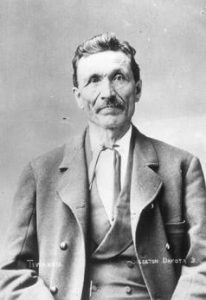 was not opposed to economic progress and he and his followers became successful farmers on the reservation. However, the Sisseton agent favored the “church” Indians.
was not opposed to economic progress and he and his followers became successful farmers on the reservation. However, the Sisseton agent favored the “church” Indians.
Renville and other leaders of the traditional Indians accused Adams of discriminating against them in the disposition of supplies and equipment. He said Adams favored the idle church-goers instead of encouraging them to work….a situation not unlike the current welfare system. Agent Adams considered Renville a detriment and removed the chief form the reservation executive board which Adams had organized to carry out his policies. It was a move that was considered extreme. In 1874 Renville was finally successful in securing a government investigation of the Adam’s activities. The outcome of the investigation was an official censure of Adams. Chief Renville continued to practice the old Santee customs, yet he encouraged the Indians to farm. This progressive influence was greatly missed after his death in August 1892.
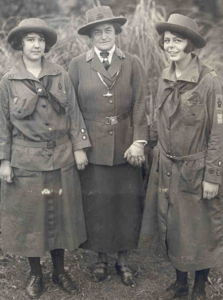 As a girl, I like many other girls became a Girl Scout. It was a group of girls having fun, while learning things and earning badges. The group was founded on March 12, 1912, and turns 105 years old today. The organization, called Girl Scouts, was founded in Savannah, Georgia by a woman named Juliette Gordon Low. She was born in 1860, and became a widow in 1905. She needed something…a cause. She had suffered through a bad marriage to a man who cheated on her and left most of his estate to his mistress. She wanted to help young women become self-sufficient…a cause borne out of her own experiences of feeling defined by the era’s roles for women, so she came up with the idea of a group that would teach young women about their worth and abilities. She first worked with a Scottish organization called Girl Guides and then founded the first American branch of the group in 1912, but she decided to break away and further develop her young women’s scouting association on her own. She soon changed the organization’s name to the Girl Scouts, and became the organization’s first president.
As a girl, I like many other girls became a Girl Scout. It was a group of girls having fun, while learning things and earning badges. The group was founded on March 12, 1912, and turns 105 years old today. The organization, called Girl Scouts, was founded in Savannah, Georgia by a woman named Juliette Gordon Low. She was born in 1860, and became a widow in 1905. She needed something…a cause. She had suffered through a bad marriage to a man who cheated on her and left most of his estate to his mistress. She wanted to help young women become self-sufficient…a cause borne out of her own experiences of feeling defined by the era’s roles for women, so she came up with the idea of a group that would teach young women about their worth and abilities. She first worked with a Scottish organization called Girl Guides and then founded the first American branch of the group in 1912, but she decided to break away and further develop her young women’s scouting association on her own. She soon changed the organization’s name to the Girl Scouts, and became the organization’s first president.
Low hoped to give her girls the opportunity to grow physically, mentally, emotionally, and even spiritually, Low 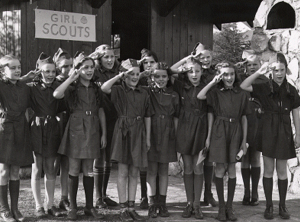 started the organization with just 18 girls in attendance at that first meeting. Low was an athlete, as well as an art lover. Her dream was to teach the girls that they could do anything. She wanted her girls to find out that they could help out in so many ways, and she definitely proved that. The Girl Scouts of America were very involved with the war effort back home during both World War I and World War II. They sold war bonds, collected peach pits for gas masks…peach pits were used as filters, worked in hospitals, and provided hands-on support to the country and the troops. Then, during the 1930s, when the Great Depression hit, the Girl Scouts again stepped up to the plate, collecting clothing and canned goods for the poor, making them quilts, providing meals for impoverished children, and helping out at hospitals.
started the organization with just 18 girls in attendance at that first meeting. Low was an athlete, as well as an art lover. Her dream was to teach the girls that they could do anything. She wanted her girls to find out that they could help out in so many ways, and she definitely proved that. The Girl Scouts of America were very involved with the war effort back home during both World War I and World War II. They sold war bonds, collected peach pits for gas masks…peach pits were used as filters, worked in hospitals, and provided hands-on support to the country and the troops. Then, during the 1930s, when the Great Depression hit, the Girl Scouts again stepped up to the plate, collecting clothing and canned goods for the poor, making them quilts, providing meals for impoverished children, and helping out at hospitals.
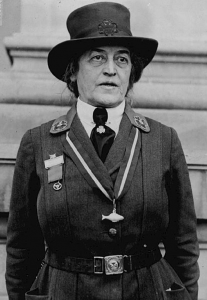
During my time in the Girl Scouts, I can’t say that I did anything that was as life changing as the Girl Scouts of days gone by, but I did enjoy my time as a scout. We learned many skills that earned us badges to wear on our sash, and some of those skills are still things I use today. The camaraderie that I felt as a Girl Scout was amazing. Some of the best friendships of my childhood were formed in those meetings. Those are years I will never forget, and I owe it all to Juliette Gordon Low, and her inspired ideas about what girls could be. Juliette Gordon Low died of breast cancer in 1927, in her Savannah, Georgia home. She was 66 years old. It was her request that she be buried in her Girl Scout uniform, because her years with the Girl Scouts were truly the happiest hears of her life. She also requested that a telegram from the National Board of Girl Scouts of the USA be placed in her pocket. It read, “You are not only the first Girl Scout, you are the best Girl Scout of them all.”

